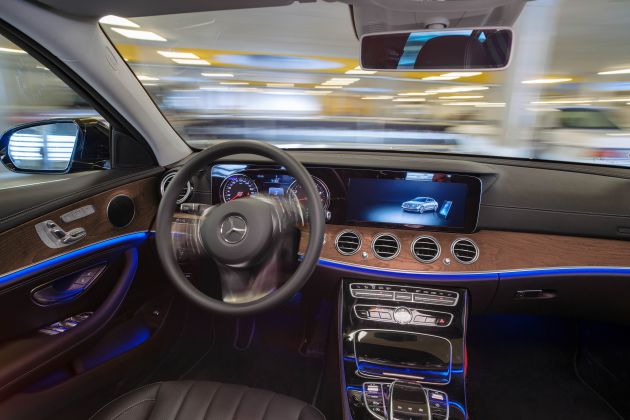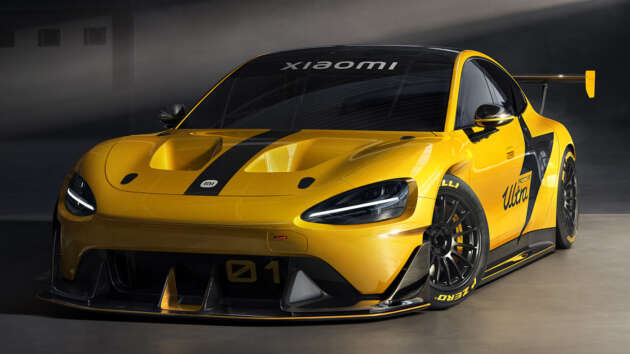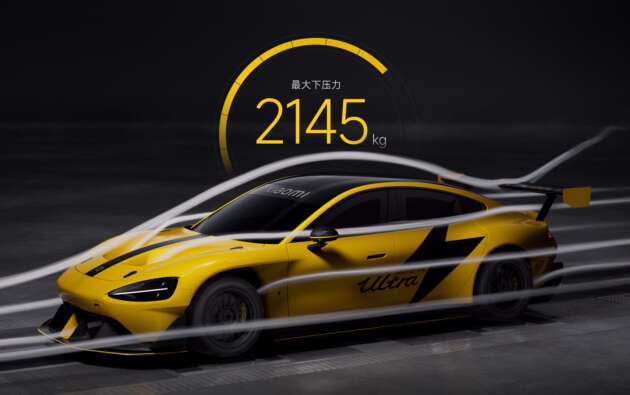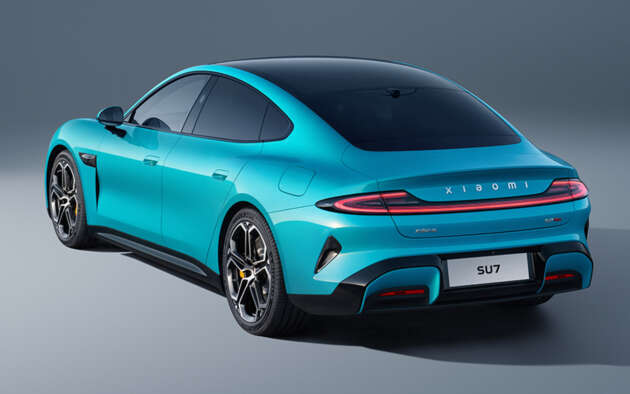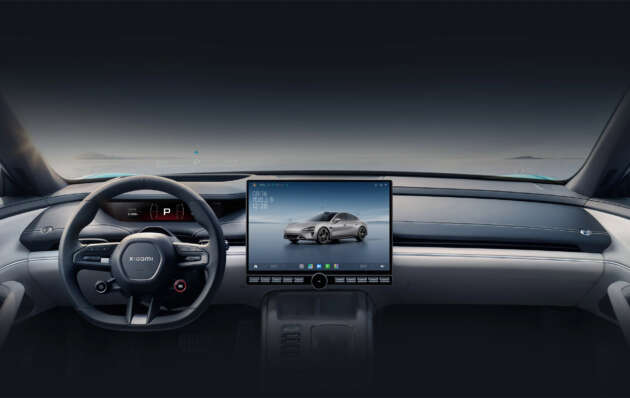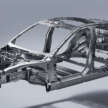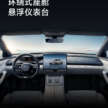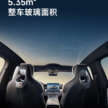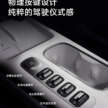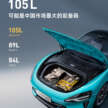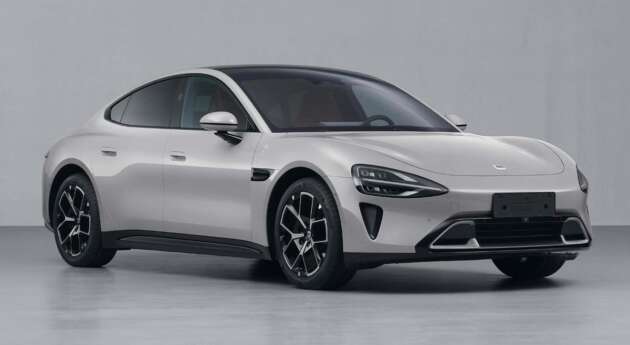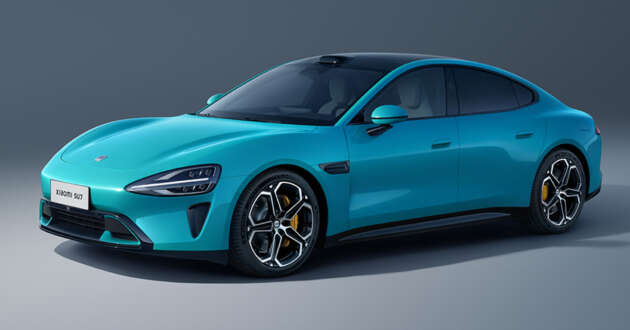
Xiaomi has officially unveiled its first electric vehicle (EV), the SU7. Previously developed under the codename MS11, the SU7 will be produced by BAIC Group in a Beijing factory that has an annual capacity of 200,000 units. According to Xiaomi CEO Lei Jun, the SU7 is a statement of intent as the company aims to become one of the world’s top five automakers in the next 15 to 20 years.
Built on the company’s Modena platform, the SU7 measures 4,997 mm long, 1,963 mm wide, 1,440 mm tall and has a wheelbase of 3,000 mm. That makes it larger than a BYD Seal and about the size of a Tesla Model S and Porsche Taycan.
The generous dimensions allow for up to 1,012 mm of vertical seating space in the front, 105 mm of rear knee room, 517 litres of rear boot space and 105 litres of front trunk (frunk) space, the last of which is said to be the largest for an EV in China, beating both the Model S (89 litres) and Taycan (84 litres).
Former BMW chief designer Chris Bangle served as the design consultant for the SU7, and the sedan’s general shape is reminiscent of the Taycan. Distinctive cues on the sedan include triangular-shaped headlamps and wide-width taillights, the latter with a sideways C-shaped signature. The body also gets various inlets, outlets, channels and a prominent diffuser element that serve to promote aerodynamics – the company claims a drag coefficient of 0.195.
As for the interior, it’s a pretty simple dashboard layout that sees a 16.1-inch touchscreen with 3K resolution taking centre stage. Xiaomi opted to retain some physical controls for various vehicle functions, and you can find them on the centre console and steering wheel.
There’s also a small digital instrument cluster ahead of the driver that rotates into view a la Bentley, and the entire infotainment system is powered by a Qualcomm Snapdragon 8295 system-on-chip (SoC). Xiaomi’s HyperOS is the software that drives the infotainment system, which surprisingly supports Apple CarPlay and AirPlay.
The good relations with Apple continue in the rear of the cabin, as there are dedicated mounting points behind the front seat headrests to mount an iPad, which can be used control various vehicle functions such as air-conditioning, seats and media playback.
The company refers to this integration as CarloT, which is a hardware ecology that is fully open to third parties. Those pinned mounting points for iPads can also be found in other areas of the cabin, allowing owners to add additional hardware such as another row of physical controls below the touchscreen or even Mijia products.
Powertrain-wise, the SU7 is built on an 800-volt electrical architecture, with Xiaomi claiming a maximum voltage of 871 volts. The company also took the time to explain about the electric motors it developed, which comes in three versions. Two of them spin at speeds of up to 21,000 rpm and are part of the ‘HyperEngine V6 Series’, with the first being the V6 that operates at 400 volts and is rated at 299 PS (295 hp or 220 kW) and 400 Nm.
There’s also the V6s that operates at 800 volts and provides 374 PS (369 hp or 275 kW) and 500 Nm. The third motor is referred to as the HyperEngine V8s, and it spins at up to 27,200 rpm and provides up to 578 PS (570 hp or 425 kW) and 635 Nm – this will be in a production car by 2025. There’s also an even more powerful HyperEngine motor that spins at up 35,000 rpm currently being developed.
The EV uses a CATL-supplied batteries that are mounted via a cell to body approach, with the total energy capacity being 101 kWh. This is good for a CLTC-rated cruising range of 800 km, with fast charging capable of recovering 220 km when plugged in for just five minutes, or 510 km within just 15 minutes.
The battery pack juices two electric motors that provide a total system output of 673 PS (664 hp or 495 kW) and 838 Nm of torque. This all-wheel drive setup also comes with a boost mode (20 seconds) and the company says the SU7 will get from 0-100 km/h in just 2.78 seconds on its way to a top speed of 265 km/h.
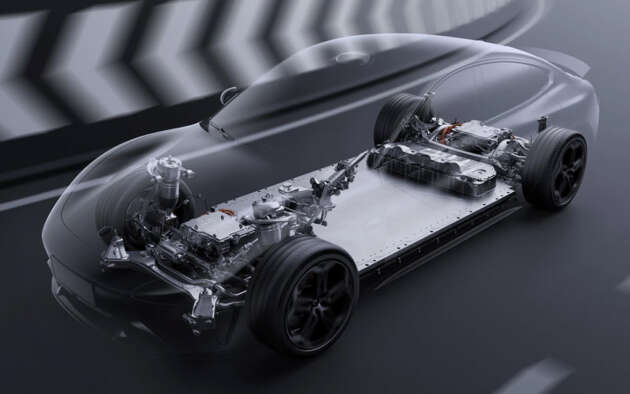
These figures apply to SU7 Max, which is one of two variants being announced that uses the HyperEngine V6 at the front and the V6s at the rear. The second variant is the base SU7 that is rear-wheel drive with the HyperEngine V6 and has a slower 0-100 km/h time of 5.28 seconds, a lower top speed of 210 km/h, a smaller battery at 73.6 kWh, less range at 668 km and a longer 0-100 km/h braking distance of 35.5 metres.
Xiaomi says the SU7 Max outperforms the Taycan Turbo and Model S, as it beats both in terms of 0-100 km/h times and top speed. The company also says the SU7 takes just 33.3 metres to get to a dead stop from 100 km/h, which is 0.7 metres less than the Taycan Turbo.
The company also took the time to explain about the electric motors it developed, which comes in three versions. Two of them spin at speeds of up to 21,000 rpm and are part of the ‘HyperEngine V6 Series’, with the first being the V6 that operates at 400 volts and is rated at 299 PS (295 hp or 220 kW) and 400 Nm. There’s also the V6s that operates at 800 volts and provides 374 PS (369 hp or 275 kW and 500 Nm.
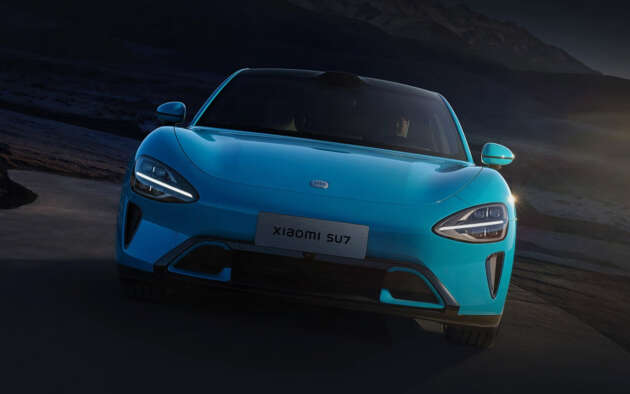
The third motor is referred to as the HyperEngine V8s, and it spins at up to 27,200 rpm and provides up to 578 PS (570 hp or 425 kW) – this will be in a production car by 2025. There’s also an even more powerful HyperEngine motor that spins at up 35,000 rpm currently being developed.
Other driving-related features include air suspension with adaptive dampers, an active shutter grille with 16 levels of adjustment and an active rear wing with four adjustment levels. On the safety and driver assistance side of things, the SU7 will come with Xiaomi Pilot as standard with 16 functions – two Nvidia Drive Orin SOCs provide 508 TOPS of processing power.
Xiaomi adds that the EV has passed 40 crash tests and core components are made of 90.1% high-strength steel and aluminium alloy (2,000 MPa) for a torsional stiffness of 51,000 Nm/degree.
The SU7 is offered in three exterior colours (Aqua Blue, Mineral Gray and Verdant Green), while the interior comes in either grey, red or black. There’s also a special edition Xiaomi 14 that follows the car’s colour scheme for customers who want their Xiaomi EV and smartphone to be all “matchy matchy.” As for pricing, Xiaomi didn’t announce anything of the sort but the SU7 is expected to go on sale in China next year.
































































































































